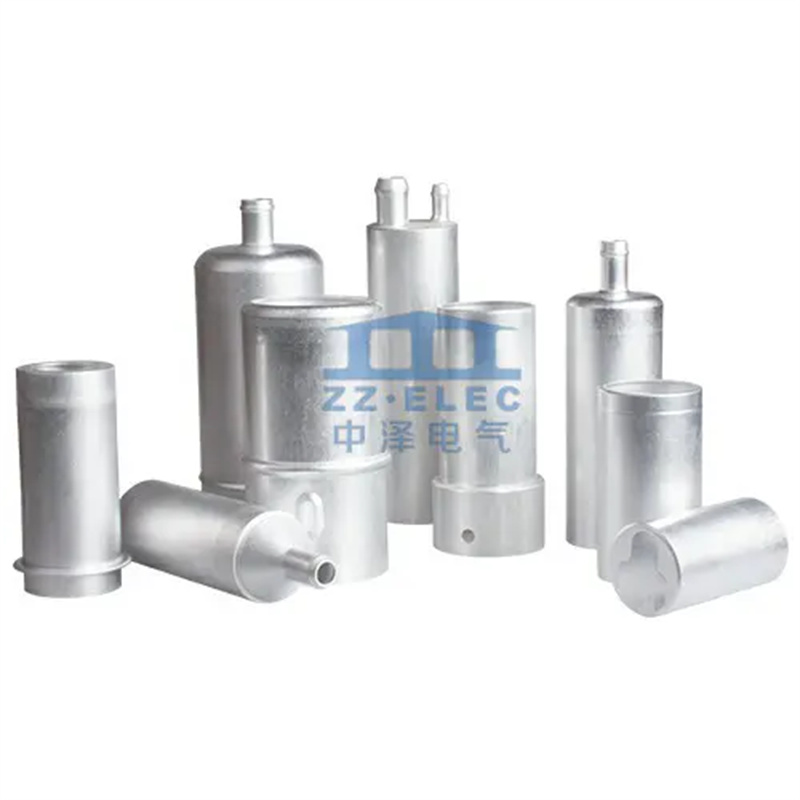Fuel Filter Structure
Fuel filter cover&housingType: nearly every existingMaterial: AL1060We specialize in Aluminum cold extrusion. Fuel filter cover and housing could ...

The fuel pump housing, a seemingly insignificant yet vital component within a vehicle's fuel system, holds a far greater importance than most people realize. It is not merely a container but a robust protective shell for the fuel pump's core components. It precisely encloses key parts such as the motor, pump core, filter, and pressure regulator, providing them with a stable and secure operating environment. The design and manufacturing of the housing directly determine the performance and reliability of the entire fuel pump assembly. Through its precise geometric construction, it ensures a tight fit for the internal components, effectively preventing fuel leaks while also dissipating heat generated by the pump to prevent overheating. Furthermore, it must withstand the high-pressure conditions within the fuel system, as well as external vibrations and impacts, offering all-around protection for the car's "heart." In essence, the fuel pump housing serves as the cornerstone for the fuel system's proper function, with its quality directly influencing the vehicle's power performance, fuel efficiency, and overall driving safety.
The selection of materials for a fuel pump housing is a delicate art that balances performance, cost, and durability. Currently, engineering plastics (such as POM and PPS) and metals (such as stainless steel) are the predominant choices in the market. Engineering plastics are widely used in standard passenger vehicles due to their lightweight, low cost, and good corrosion resistance. However, their performance may be limited in high-pressure or extreme environments. In contrast, high-performance metal materials like stainless steel offer unparalleled advantages. Stainless steel boasts excellent corrosion resistance and high strength, allowing it to operate stably for extended periods in high-pressure fuel systems without deforming or cracking. This is crucial for high-pressure fuel pump housing manufacturing. Although the manufacturing cost of a stainless steel housing is relatively higher, its superior durability and reliability make it the preferred choice for high-end vehicles and applications with more stringent performance requirements. The choice of material is a pivotal factor in determining the pressure resistance, corrosion resistance, and lifespan of the fuel pump housing, thereby affecting the overall performance of the entire fuel pump assembly.
The manufacturing process of a fuel pump housing is a challenging and precise engineering endeavor. It is far from a simple casting or injection molding process, requiring the integration of multiple high-tech techniques. First, in the manufacturing of an electric fuel pump assembly housing, whether through plastic injection molding or metal stamping, extremely high dimensional accuracy and surface finish are required to ensure a perfect fit with internal components and prevent any tiny gaps that could lead to fuel leaks. Second, to cope with the high-pressure environment inside the fuel system, the housing's wall thickness, structural design, and stress distribution must be meticulously calculated and simulated. Modern manufacturing technologies, such as CNC machining, laser welding, and precision casting, ensure that the housing's geometry and sealing performance meet the highest standards. Before leaving the factory, every single product must undergo rigorous pressure and leak tests to guarantee its stability and safety under extreme conditions. This relentless pursuit of precision is the very foundation that ensures the efficient and reliable operation of a car's fuel system.
As the guardian of the fuel system, the fuel pump housing can also experience failures for various reasons. Although it is inherently durable, a strong external impact or abnormal internal pressure fluctuations can still cause cracks or deformation. When the fuel pump housing fails, drivers may notice a series of unusual symptoms, such as difficulty starting the engine, sluggish acceleration, abnormal increase in fuel consumption, or even smelling gasoline. These are all critical clues for fuel pump housing failure diagnosis. Although stainless steel fuel pump housings offer superior durability, regular inspection and maintenance are still paramount. For instance, checking the fuel pump housing for abnormal wear or cracks when replacing the fuel filter can effectively prevent potential safety hazards. Once a damaged housing is confirmed, the entire fuel pump assembly must be replaced promptly, as simply repairing the housing cannot guarantee its safety and sealing performance under high pressure. Correct diagnosis and timely maintenance are essential safeguards for ensuring the efficient operation of your car's fuel system and your driving safety.
